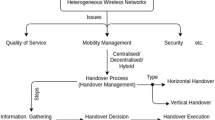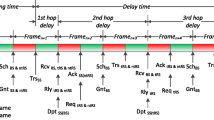Abstract
A wide-spectrum of WiMAX simulators have been developed to provide analysis for advanced WiMAX system development, including the open source tool ns-2, and commercial software such as QualNet and OPNET Modeler. These tools are among the pertinent simulators, however, there are trade-offs such as complexity, large integrated components and licensing cost for commercial simulators. To strike an ideal balance in gauging these trade-offs and to further complement the repository of simulators, this paper presents the details of a general-purpose programming language based discrete event simulation for WiMAX. This research has focused at developing a discrete-event simulator to implement bandwidth allocation algorithms for a WiMAX base station. The highest urgency first algorithm has been utilized as a benchmark deployment algorithm in order to provide: dynamic downlink/uplink adjustment and latency guarantee for real-time applications. Two performance analyses have been deployed for the purpose of extensive testing of the developed simulator. The analysis encompasses the modulation and coding scheme awareness and the latency guarantee with multiple and distinct requirements. The results show that the developed simulator has successfully produced the benchmark results. These findings have proved that the new simulator has successfully become a reliable option for WiMAX resource management performance analysis.
Similar content being viewed by others
References
IEEE 802.16 Working Group. (2004). Air interface for fixed broadband wireless access systems.
Cable Television Laboratories Inc. (1999). Data-over-cable service interface specifications—radio frequency interface specification v1.1.
Lin, Y.-N., Lin, Y.-D., Lai, Y.-C., & Wu, C.-W. (2009). Highest urgency first: A latency and modulation aware bandwidth allocation algorithm for WiMax base stations. Computer Communications, Elsevier, pp. 332–342.
Valencia, C. (2009). Scheduling alternatives for mobile WiMAX end-to-end simulations and analysis, M.S thesis, Faculty of Graduate Studies and Research, Department of System and Computer Engineering, Carleton University, Ottawa, Canada, K1S 5B6.
The OPNET modeler. Available at http://www.opnet.com/WiMAX/.
The QualNet software. Available at http://www.scalable-networks.com/.
Chen, J., Wang, C., Tsai, F. C., Chang, C., Liu, S., Guo, J., et al. (2006). The design and implementation of WiMAX module for ns-2 simulator. In Proceeding from the 2006 workshop on Ns-2: The IP network simulator (Pisa, Italy, October 10–10, 2006), WNS2 ’06, Vol. 202. ACM, New York, NY, 5 R. E.
Mobile WiMAX Part I. (2006). A technical overview and performance evaluation. In WiMAX Forum.
Belghith, A., & Nuaymi, L. (2008). ENST Bretagne and Rennes, Comparison of WiMAX scheduling algorithms and proposals for the rtPS QoS class, This paper appears in Wireless conference 2008. EW 2008. 14th European, Publication Date: 22–25 June 2008, pp. 1–6.
Nance. (1993). A history of discrete event simulation programming languages. In Proceeding 2nd ACM SIGPLAN conference on history of programming languages. ACM Press, pp. 149–175.
Author information
Authors and Affiliations
Corresponding author
Rights and permissions
About this article
Cite this article
Naghshbandi, D., Subramaniam, S. & Rahimi Moghadam, S. An Event-Driven Simulation for Highest Urgency First (HUF): A Latency and Modulation Aware Bandwidth Allocation Algorithm for WiMAX Base Stations. Wireless Pers Commun 69, 39–52 (2013). https://doi.org/10.1007/s11277-012-0559-9
Published:
Issue Date:
DOI: https://doi.org/10.1007/s11277-012-0559-9




